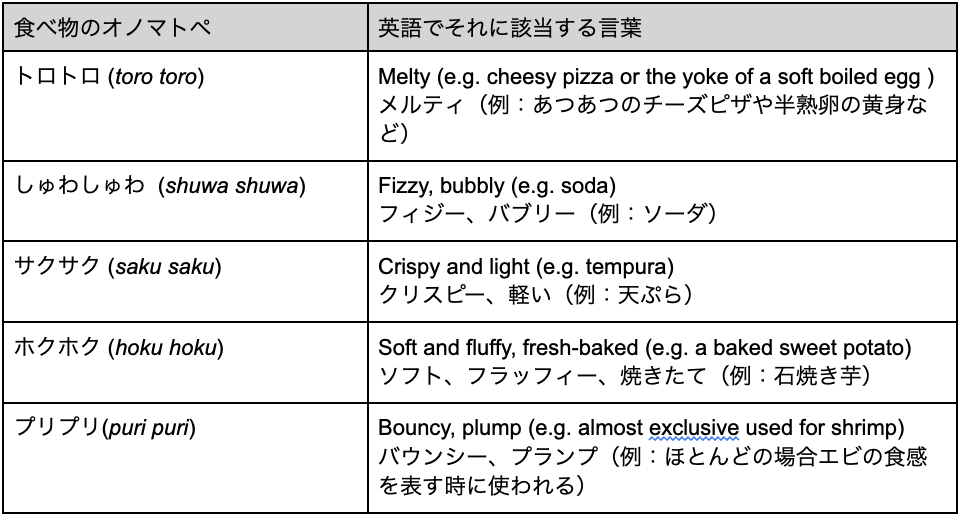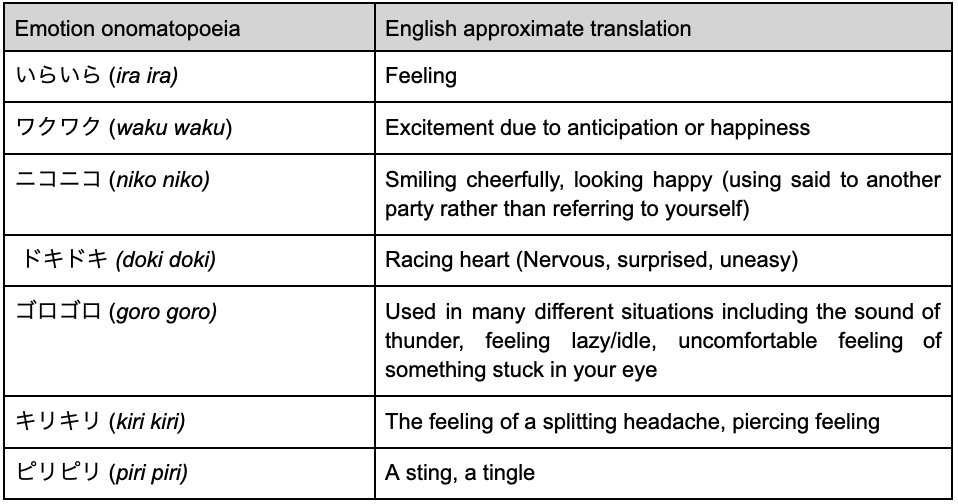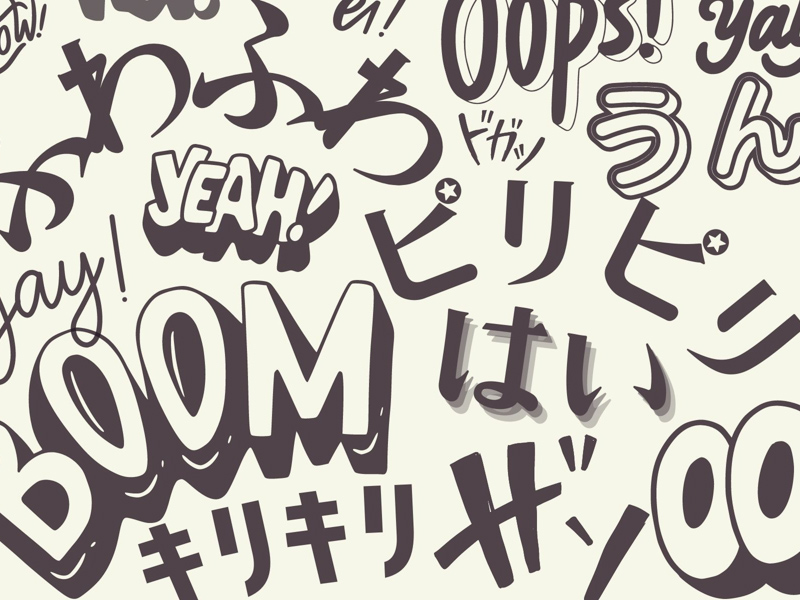When speaking in my native language, English, I don’t think deeply about the syntax of my sentences or the semantics of everything I say. I don’t confine myself to 20 simple grammar rules, 50 commonly-used phrases, and 100 basic vocabulary for daily life. I’m rarely at a loss for words in the literal sense.
The distinct privilege of learning a language in its native country is being able to retain it through everyday conversation. When I moved to Tokyo two years ago, my relationship with the Japanese language did a 180. Questions constantly arose: what does that word mean? How can I best describe this food? Which verb is correct in this context? Every interaction brought new insights regarding the gaps in my knowledge. I found myself trying to absorb everything at once. I was especially fascinated by words that were surprisingly specific and situational, namely parts of language known as onomatopoeia or interjections. Used in everyday Japanese, many are untranslatable into English. However, they are essential for effective communication in Japanese. Since I would be out of my depth to unpack it all, I will only scratch the surface of this topic and hopefully spark interest in anyone at the start of their Japanese language-learning journey.
Firstly, what are interjections? An interjection is a word or phrase that expresses feeling rather than meaning. In English, an interjection is usually a response to a situation. “It’s raining, and I forgot my umbrella today. Ugh!” or “Wow, the stars are so beautiful tonight.” These words are usually grammatically separate from the rest of a sentence and might be used to punctuate a statement or set the emotional tone. The same applies to Japanese, excluding the interjection known as 相槌 (aizuchi). Aizuchi is an interjection during a conversation that affirms to the speaker that the listener is engaged. What is intriguing about aizuchi in Japanese is that it indicates the listener understands, but it does not necessitate agreement. Rather than being viewed as an unwelcome interruption, aizuchi expresses that a conversation is never one-sided. Depending on the other party, you will use a formal or casual form of speech, but these interjections are employed regardless.

The most crucial learning tool at your disposal is your ability to listen. This applies to any language, but it is especially salient in Japanese. Japanese is a language that values listening as a whole experience. Frankness and directness are also crucial modes of communication, but they cannot be used in every situation. Reading the body language of your conversation partner and interpreting the meaning of what’s being said is as natural as taking in words at face value. In Japanese, interjections send a meaningful message to the other party while keeping the ball in their court.
Besides being difficult to spell, what is onomatopoeia? Onomatopoeia is the process of naming words that represent sounds. Think words like bam, meow, crunch, vroom, etc. While similar to interjections, onomatopoeia words are a distinct part of speech. The average Japanese vocabulary contains innumerable onomatopoeia words, significantly more than English. Even a first-time visitor to Japan will quickly notice the ubiquity of these sound-based words. In Japanese, onomatopoeia words describe sounds made by animals, humans, inanimate objects, and nature. In the Japanese language, there is a sense that less is more. There is beauty in simplicity, even if just the illusion of it. For example, the textures of hundreds of dishes in Japanese cuisine can be described with remarkable specificity, while succinctly spun into a single word.

Japanese onomatopoeia words also describe emotions/moods, movements/motion, and sensory conditions. Against definition, these onomatopoeia words describe something that does not make a sound. They would more accurately be called “ideophones.” I find this type of onomatopoeia especially interesting because it is not commonly found in English. In English, these words may be labeled as euphemistic or indirect.

English speakers may share definitions associated with words, but not the feelings those words evoke. This is especially the case for emotion-based words because there is no one way to experience emotion. Therefore, it is particularly apt to describe an emotion by how it feels. It may be more direct to say, “I’m annoyed right now,” but saying, 「イライラしている」 better conveys how being annoyed affects you. There is a sense of implicit, mutual understanding in the Japanese language. Instead of explaining everything in painstaking detail, you ask the other party to fill in the gaps.
In summary, these parts of speech reveal that one of the many reasons the Japanese language is unique is its empathy for the complexity of the human experience. It shows that there is room for words to be imperfect. Why are onomatopoeia words so abundant in Japanese? When did the use of interjections begin? Unfortunately, the answers to these questions are not well or widely researched. While many websites provide lists of onomatopoeia words and interjections, these lists are nonexhaustive and often conflate stereotypes about Japan with information regarding the Japanese language. The Japanese language, like all languages, is an amalgamation of culture, history, and current events. Once we understand that we can only uncover so much at a given time, we can continue our exploration. Onomatopoeia and interjections are an exciting first step.
Sources
NA, 2022, Writing Explained, accessed May 19, 2022,
https://writingexplained.org/grammar-dictionary/interjection
Japanese Study, 2020, Coto Academy, accessed May 19, 2022,
https://cotoacademy.com/conversational-japanese-aizuchi-conversational-interjections/
Jenie Gabriel, 2016, Gengo, accessed May 19, 2022,
https://gengo.com/language-and-culture/japanese-onomatopoeia-meanings/
Hasada Rie, 1994, Open Research Repository, accessed May 19, 2022,
https://openresearch-repository.anu.edu.au/bitstream/1885/132958/4/b18941692_Hasada_Rie.pdf









